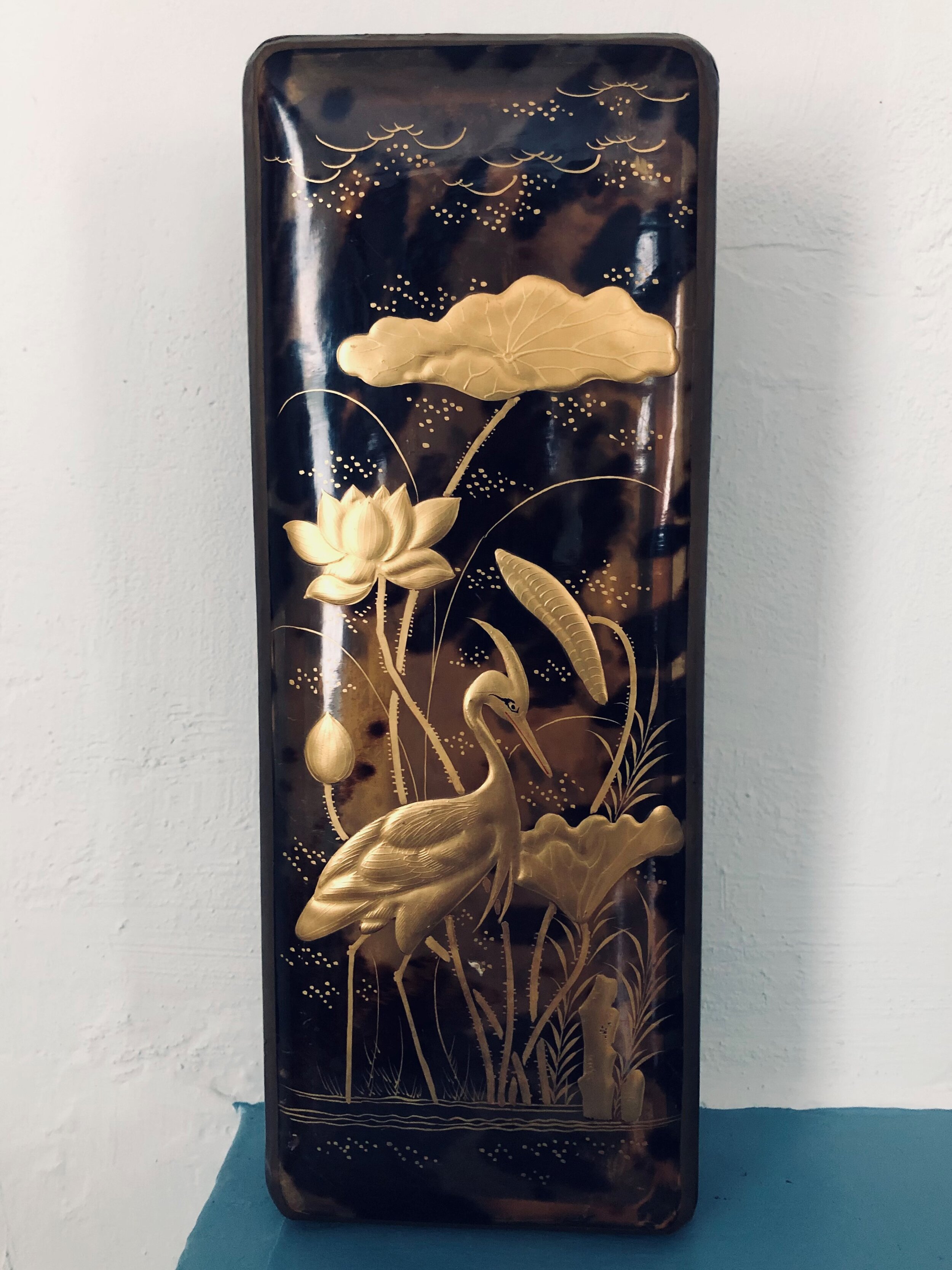Thinking about Asian American and Pacific Islander Month I thought of this elegant letter box from Japan.
~ BHS Docent, Cobb House Museum
Japanese Fubako or Letter Box with Crane and Lotus motif, 19th century Japan. Gold Maki-e on black lacquer, tortoiseshell.
Gift of the Cleverley-McConchie Family 1970.227
The Meiji period saw a renewed interest in lacquer as artists developed new designs and experimented with new textures and finishes. Maki-e, decorating the lacquer in gold or silver dust, was the most common technique for quality lacquerware in this period. Bamboo tubes and soft brushes of various sizes are used for laying powders and drawing fine lines. As it requires highly skilled craftsmanship to produce a maki-e painting, young artists usually go through many years of training to develop the skills and to ultimately become maki-e masters. Lacquer from Japanese workshops was recognized as technically superior to what could be produced anywhere else in the world.
Sailing ships were built larger through the 1830s, 40s, and 50s, as longer trade routes became routine and the threat of pirates diminished. From 1841 through 1860, “extreme clippers” dominated the trade to Asia. These ships were large, carrying huge, lucrative cargoes of tea, spices, textiles, and chinaware to consumers in America and Europe.
On July 8, 1853, American Commodore Matthew Perry led his four ships into the harbor at Tokyo Bay, seeking to re-establish for the first time in over 200 years regular trade and discourse between Japan and the western world.
In Europe and America, the new availability of Japanese art led to a fascination for Japanese culture; a craze known in Europe as Japonisme. In the decorative arts, Japanese artists reached new levels of technical sophistication.



